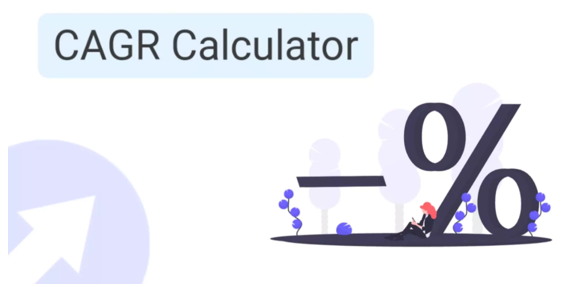When planning your investments, especially in mutual funds, it’s important to understand how your money can potentially grow over time. Whether you choose an SIP investment plan or make a lumpsum investment, calculating estimated returns helps you stay on track with your financial goals. This is where a CAGR calculator becomes a useful tool. It provides a clear picture of the average annual growth rate of your investment, making it easier to assess performance.
Let’s explore how CAGR works and how it helps in both SIP and lumpsum investments.
Understanding CAGR and how it is calculated
CAGR stands for Compound Annual Growth Rate. It represents the average yearly growth of an investment over a specific period, assuming the profits are reinvested at the end of each year. It smoothens out the volatility in returns and shows the consistent rate at which your investment would have grown if it had compounded annually.
The formula for CAGR is:
CAGR = [(Ending Value / Beginning Value) ^ (1 / Number of Years)] – 1
Using a CAGR calculator simplifies this process. You only need to enter the start value, end value, and the investment period to get the result instantly.
How CAGR helps in an SIP investment plan
An SIP investment plan involves investing a fixed amount regularly in a mutual fund, usually every month. Since the investment is spread out over time, calculating the return is a bit more complex than it is for lumpsum investments. However, CAGR still provides a useful snapshot.
Here’s how:
- Gives a clear return estimate: CAGR tells you about the average rate at which your invested amount has potentially grown over the years, making it easier to compare different mutual fund options.
- Supports better decision-making: By knowing the historical CAGR of a fund, you can gauge its past performance and assess if it aligns with your risk appetite and goals. However, past performance may or may not be sustained in the future.
- Track progress over time: If you’re regularly reviewing your investments, CAGR can help measure how your SIP investment plan is performing and whether it’s on track.
Though an XIRR (Extended Internal Rate of Return) is more suitable for SIPs due to their periodic nature, CAGR is still useful for an at-a-glance understanding of fund performance.
Why CAGR is useful for lumpsum investments
In a lumpsum investment, you invest a large amount at once. In this case, CAGR is a direct and effective way to calculate returns. You know your investment amount, the duration, and the current value—perfect inputs for a CAGR calculator.
Benefits include:
- Simplifies return calculation: You don’t need to manually apply the formula or worry about annual returns. The calculator gives you the CAGR quickly.
- Helps compare options: You can compare the CAGR of different funds or investments over the same period to see which performed better.
- Useful for long-term planning: When projecting returns for retirement, education, or other financial goals, CAGR offers a realistic view of average growth over time.
Using a CAGR calculator effectively
A CAGR calculator is easy to use and widely available online. Here’s how to use one:
- Enter the initial investment amount (beginning value)
- Enter the current or expected value (ending value)
- Enter the number of years the investment is held
- Click ‘Calculate’ to get the CAGR
Some calculators also let you input the investment start and end date and will auto-calculate the duration.
Here are a few preferred practices:
- Always use the same time frame for comparing different investments
- Use CAGR along with other metrics like risk, consistency, and fund ratings for a complete evaluation
- Remember that CAGR does not reflect volatility or interim fluctuations—it only shows the end-to-end growth
Limitations to keep in mind
While the CAGR calculator is a powerful tool, it’s important to understand its limitations:
- Ignores market ups and downs: CAGR assumes steady growth, which is rarely the case in real markets
- Doesn’t reflect investment frequency: For SIPs, CAGR doesn’t capture the impact of investing at different NAVs
- Only shows past performance: CAGR is based on historical data and does not guarantee future returns
Despite these limitations, CAGR remains a simple and reliable way to gauge how your investments have performed.
Conclusion
Understanding how your money grows is essential to building a strong financial future. Whether you follow an SIP investment plan or prefer lumpsum investing, a CAGR calculator helps you stay informed. It offers a quick, reliable way to evaluate past performance and make better decisions going forward.
Toward the end of your planning journey, you may also want to explore other tools such as a lumpsum mutual fund calculator, especially if you’re comparing various investment routes. Together, these tools can help you make confident, data-backed financial choices.





























